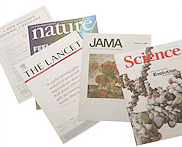Community Embraces New Word Game at Mid-Year Play Day This past Sunday, families at Takoma Park’s Seventh Annual Mid-Year Play Day had the opportunity to experience OtherWordly for the first time. Our educational language game drew curious children and parents to our table throughout the afternoon. Words in Space Several children gathered around our iPads […]
Read moreTag: journals
 The system of getting knowledge about science to the public is broken. One major crack in the system is a disconnect between science museums and new science research.
The system of getting knowledge about science to the public is broken. One major crack in the system is a disconnect between science museums and new science research.
Science museums matter
Aside from the news media, which now has less science coverage as the journalism business contracts, museums play a vital role in how the public learns about science outside of school. New data show that science museums play an important part in this informal learning.
Despite enthusiastic scientists who are using social media, leading citizen science, and supporting other kinds of outreach, the vast majority of scientific information is ensconced in journals and conferences.
To connect this knowledge to the public, it’s common practice for closed-access journals to give journalists free (advance) access to new articles. But the same courtesy is not provided to science museums that would also benefit from new articles, as well as a back library of older articles. And science museums rarely budget for journal subscriptions. (more…)
 Open access means that readers have free access. But who pays for the operational costs of running a publication? Often it’s the authors, though there are several common business models.
Open access means that readers have free access. But who pays for the operational costs of running a publication? Often it’s the authors, though there are several common business models.
How much are authors paying? What do they think about it? And what are some other business models to sustain journals and other kinds of digital content? (more…)
 Open access journals are transforming how researchers share information, and how the public can access it. They are peer reviewed journals which are digital, online, free of charge, and free of most copyright and licensing restrictions.
Open access journals are transforming how researchers share information, and how the public can access it. They are peer reviewed journals which are digital, online, free of charge, and free of most copyright and licensing restrictions.
Open access journals are now commonplace. As of last lear, nearly 10% of scholarly articles were published in open access journals. There are now currently over 7500 open access journals, according to the Directory of Open Access Journals (DOAJ), which indexes freely available, peer-reviewed journals that don’t have an embargo period (see criteria). (more…)

